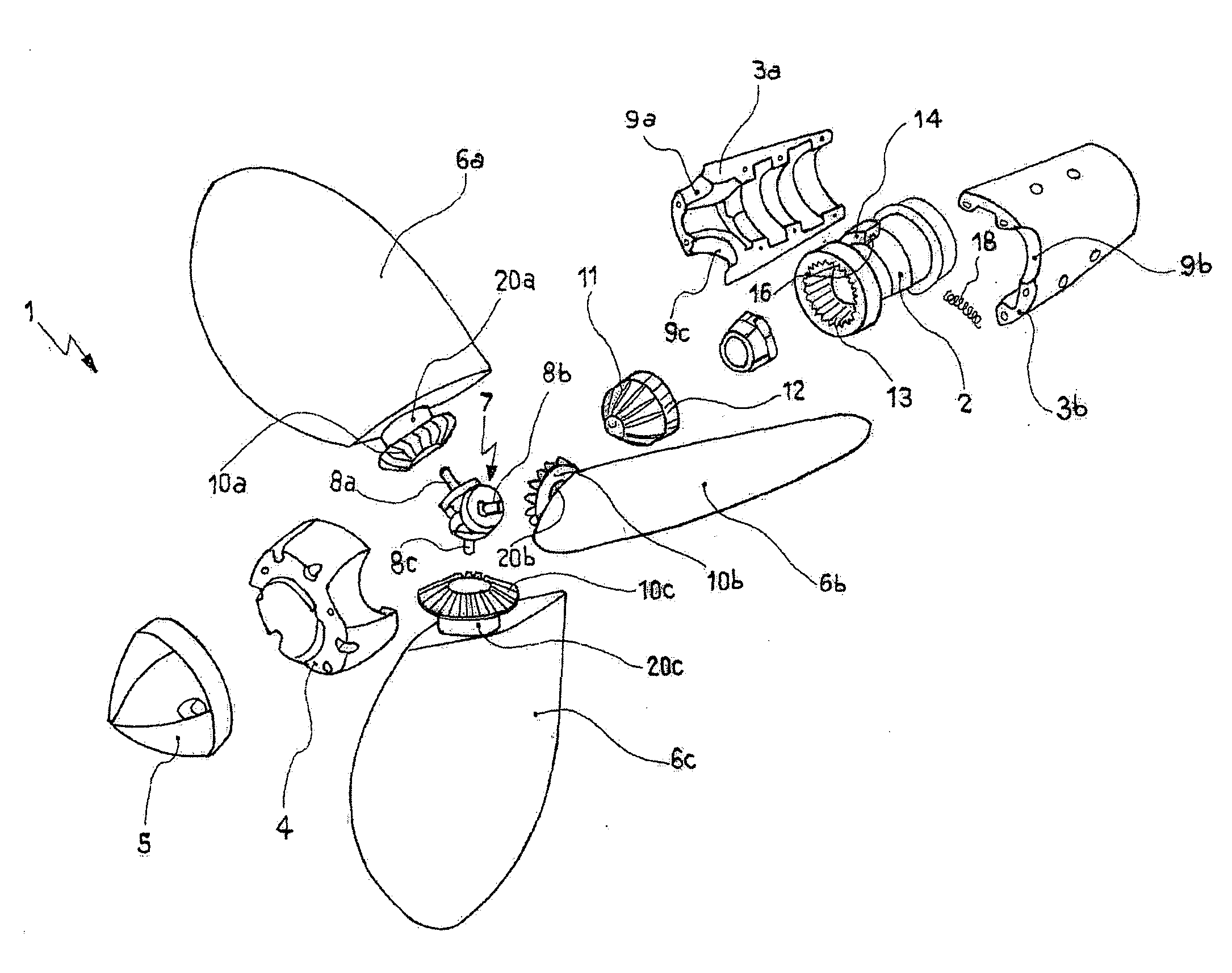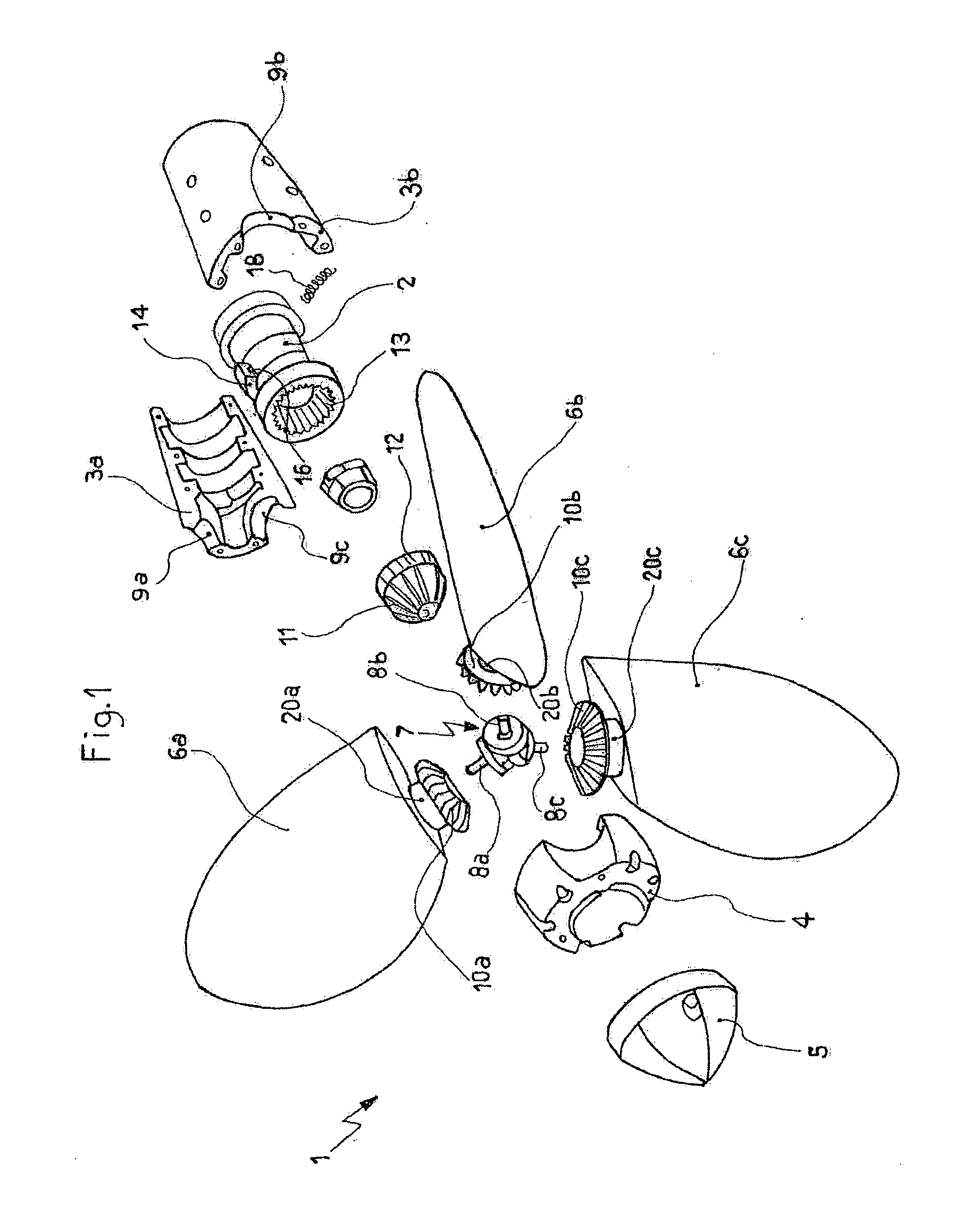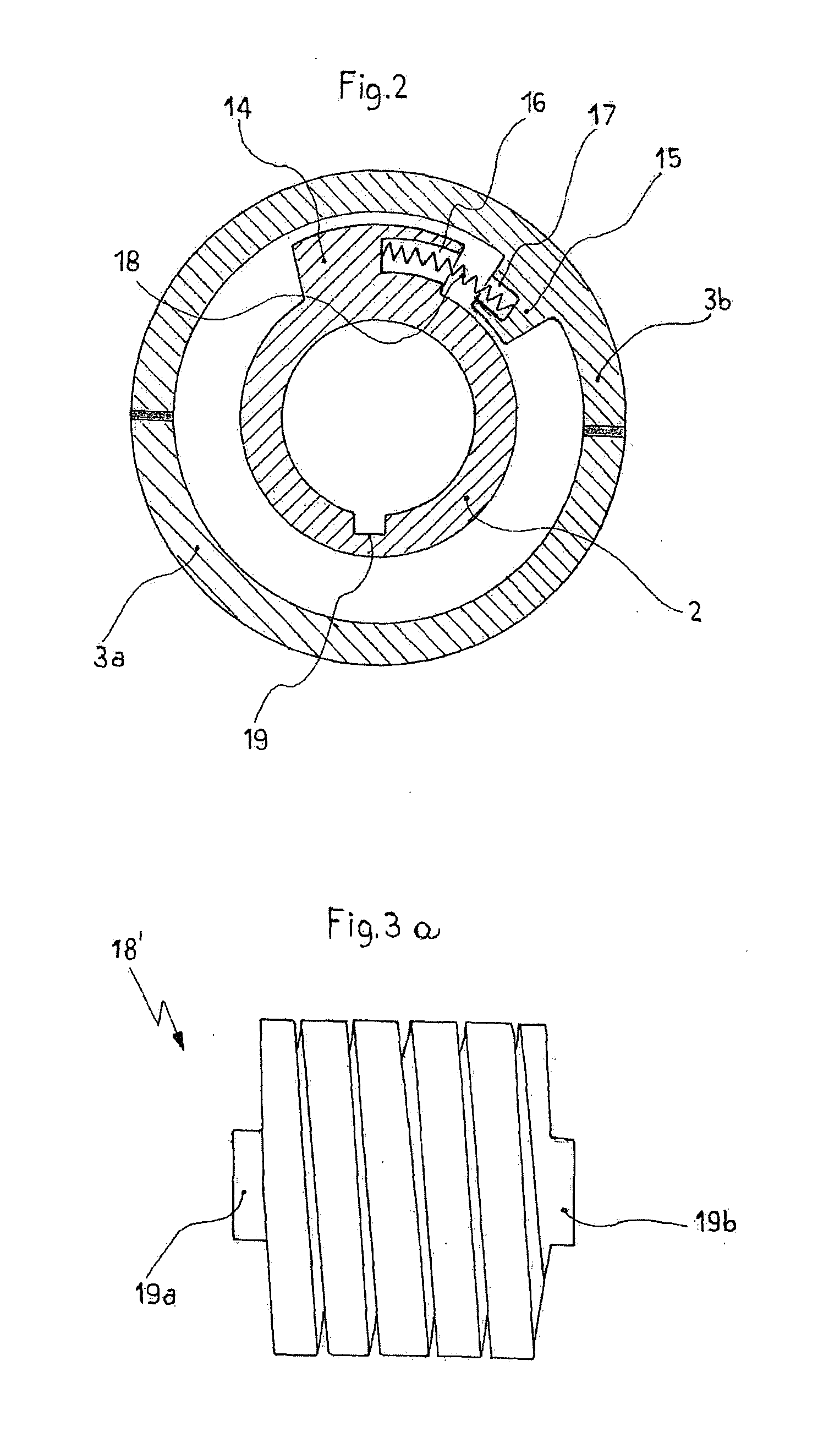Variable-pitch propeller
a propeller and variable pitch technology, applied in the direction of propellers, propulsive elements, water-acting propulsive elements, etc., can solve the problems of not being able to obtain discrete or continuous variations of pitch, not being able to change the rotation angle of the operator to modify the pitch during the propeller, and not being able to achieve optimal propeller efficiency
- Summary
- Abstract
- Description
- Claims
- Application Information
AI Technical Summary
Benefits of technology
Problems solved by technology
Method used
Image
Examples
Embodiment Construction
[0037]Referring to FIGS. 1 and 2, is shown a propeller 1 of the variable-pitch type, able to arrange in a feathered position, preferably for sailing boats. Such a propeller 1, according to a particular aspect of the present invention, is composed of, similarly to the propeller described in IT 1 052 022, a hollow cylindrical casing 3a, 3b, 4, divided in two semi-shell 3a, 3b interfixed by bolts (not shown), for example, and protected by a cylindrical end 4 lid, a tip 5, as well as a shaft (not shown), driven by an adapted engine and integral to a sleeve 2, that is coaxially coupled to the cylindrical casing 3, 3b, 4 itself, so as to allow, as later explained, the rotary motion transmission from the shaft to the cylindrical casing 3a, 3b, 4 itself.
[0038]Once assembled, the cylindrical casing 3a, 3b, 4 has circular openings 9a, 9b, 9c, in which pins 20a, 20b, 20c are rotatably housed, being integral at one of their ends to the corresponding blades 6a, 6b, 6c of the propeller 1, that ob...
PUM
 Login to View More
Login to View More Abstract
Description
Claims
Application Information
 Login to View More
Login to View More - R&D
- Intellectual Property
- Life Sciences
- Materials
- Tech Scout
- Unparalleled Data Quality
- Higher Quality Content
- 60% Fewer Hallucinations
Browse by: Latest US Patents, China's latest patents, Technical Efficacy Thesaurus, Application Domain, Technology Topic, Popular Technical Reports.
© 2025 PatSnap. All rights reserved.Legal|Privacy policy|Modern Slavery Act Transparency Statement|Sitemap|About US| Contact US: help@patsnap.com



